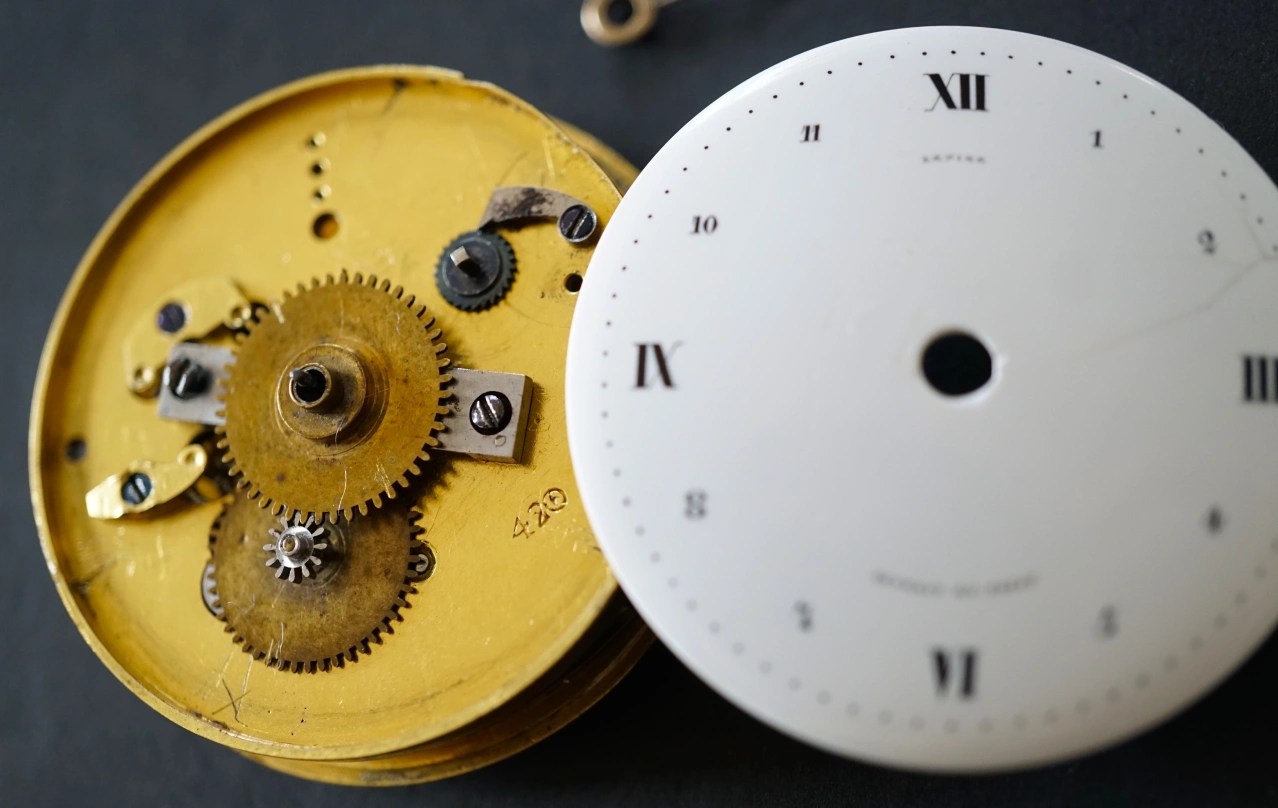







Description: Silver cased (later) gilt brass, back wound, unique experimental movement with virgule escapement (overall diameter 40.8mm). Two plate construction using the same layout as Louis Berthoud (see above) with fusee and chain. The ‘A,R’ on the balance bridge table, readable from the balance bridge foot side, as in the intermediate versions between 1775 and 1780. Balance bridge pierced as per Lépine style. Enameled copper dial signed ‘Lépine Invenit et Fecit’ and features the earliest known and unique version of combined Arabic and Roman numerals. In addition the hours markers are subdivided into 6 instead of 5, making the hour having 72 minutes instead of 60. Original brass Lépine hands. Counter enamel hand signed ‘J. F. Cave de Harley’, where Lépine usually had many of his dials made. New type of hidden case spring and has a ‘cuvette’ (dust cap) with the usual engraved instructions and ‘L’Epine H(orl)ger du Roy’ and is numbered ‘No. 2076’.
Additional Info:
This movement shows many unique, experimental features such as the ‘Lépine hands’, later better known as ‘Breguet hands’ (Breguet made slight modifications, see below), as well as the earliest use of a round minute hand pinion instead of a squared one. Latter feature might be emphasizing the use of the back winding and especially the fact, that the hands can be adjusted from the back as well, making the square shape of the minute hand pinion obsolete. The dial shows the first attempt of Lépine to mix Arabic and Roman numbers to attain a mostly symmetrical aspect. The unique dial showing the hour subdivided into 72 minutes might have been a specific order. Apart of having implications in astronomy and astrology, the only known use of such a subdivision is to find within the Jewish calendar. Further research is needed for us to understand the details of such a unique subdivision.
Lépine hands

The hand style erroneously attributed to Breguet, which shows a very thin tip protruding from a circular skeletonized disc was developed by Lépine porbably as early as 1775 maybe from ‘pear’ like precursors (see Kinable No. 626). The original Lépine hands were thin, had a long tip and most importantly the skeletonisation of the disc is concentric. Abraham – Louis Breguet will modify this style by making the tip more triangular, shorter and by placing the hole excentrically in the disc more in direction of the tip, leaving a ‘crescent moon’ like aspect. This style of hands is now known as ‘Breguet hands’ as they were marketed as such since Breguet introduced them. They still are extensively used by the Breguet firm until present.
